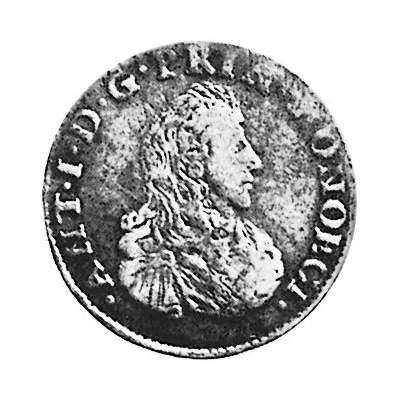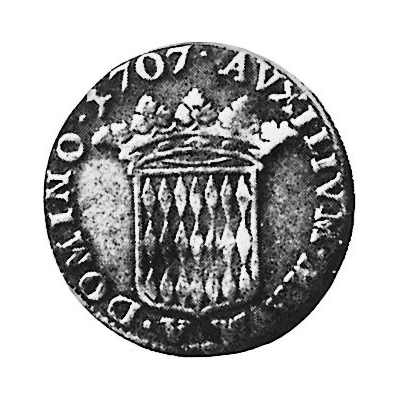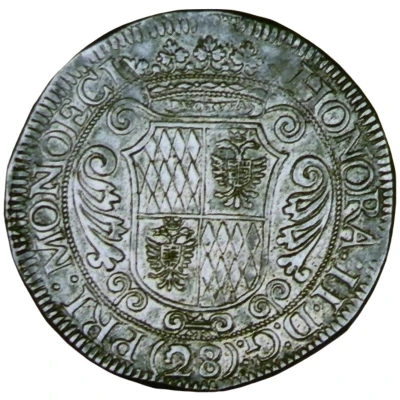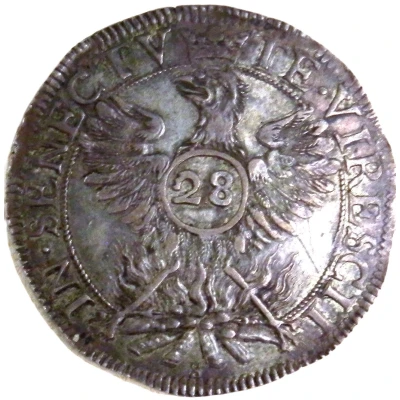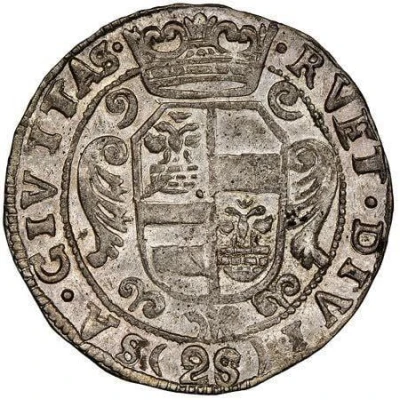
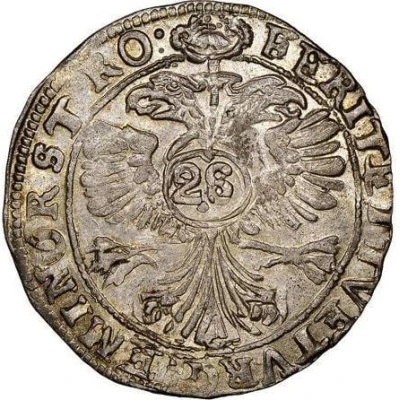

© Éditions V. Gadoury
Izelotte d'argent de 28 sols - Honoré II ND
1657 year| Silver | 19.11 g | 42 mm |
| Issuer | Monaco |
|---|---|
| Prince | Honoré II (1612-1662) |
| Type | Standard circulation coin |
| Year | 1657 |
| Value | 1 Izelotte (7⁄5) |
| Currency | Livre tournois (781-1795) |
| Composition | Silver |
| Weight | 19.11 g |
| Diameter | 42 mm |
| Shape | Round |
| Technique | Hammered |
| Orientation | Coin alignment ↑↓ |
| Demonetized | Yes |
| Updated | 2024-10-06 |
| Numista | N#357328 |
|---|---|
| Rarity index | 97% |
Reverse
Double-headed eagle bearing the value 28 in a circle on its chest. Between the two heads a staff with a crown at the top that separates the legend. Wings, claws, tight tail. Point at the bottom of the 28.
Script: Latin
Lettering: FERIT ET TUETUR GEMINO ROSTRO .
Edge
Plain
Comment
Special production for the Levant (Ottoman Empire)This coin, attributed either to the imperial city of Emden in Germany, or to the Duchy of Modena in Italy according to the authors, has been definitively attributed since 2016 to the Principality of Monaco following the discovery of an unpublished archive document.
See C.Charlet and F.Pastrone (Gadoury Monaco) BSFN 71/9 of November 2016, pages 352 to 357.
There are several varieties: broad crown, narrow crown, upward spirals, downward spirals, fan-shaped or tight tail.
And differences in the legend: RUETE.DI.DIVISA - GEMINO RSTRO - dot after FERIT
Weight between 16.70g and 19.95g
Low-title silver
Interesting fact
One interesting fact about the Izelotte d'argent de 28 sols - Honoré II ND (1657) coin from Monaco is that it was minted during a time of great economic and political change in the region. The coin was issued in 1657, just a few years after Monaco had gained its independence from Spain, and it was part of a series of coins minted by Honoré II, the first sovereign prince of Monaco, to establish the principality's own currency. The coin's design features the coat of arms of Monaco on one side and the image of a saint on the other, and it was made of silver, which was a valuable and widely used metal at the time. Despite its age, the coin remains a popular collector's item and a symbol of Monaco's rich history and cultural heritage.
